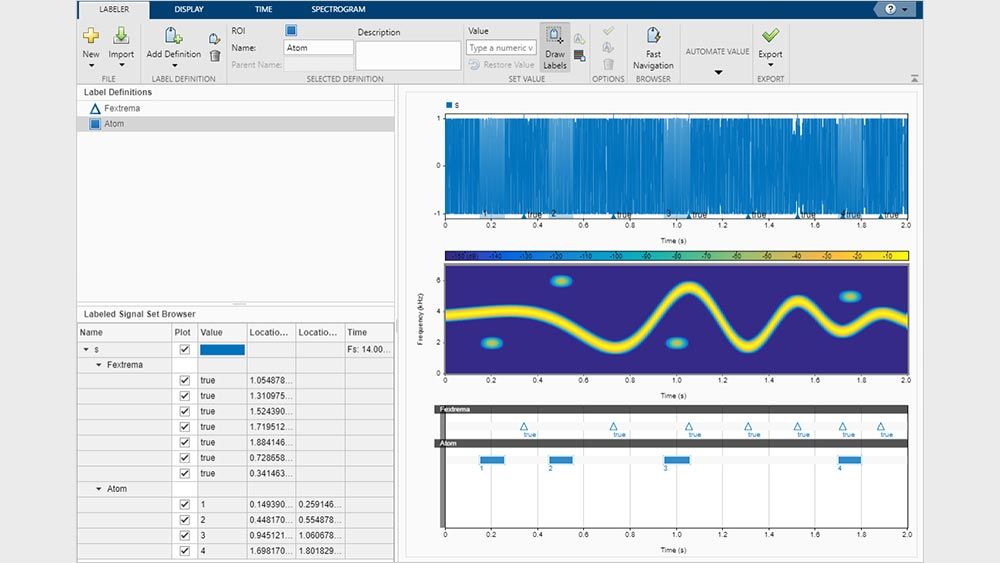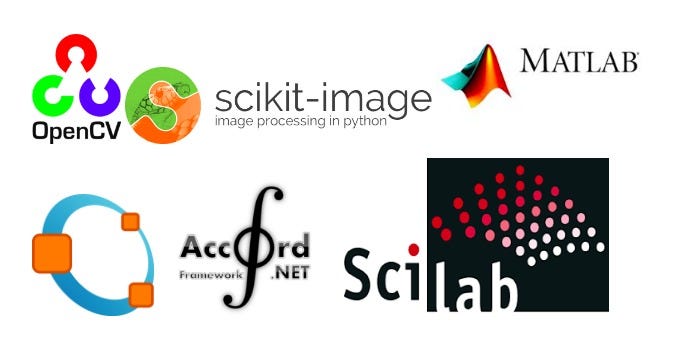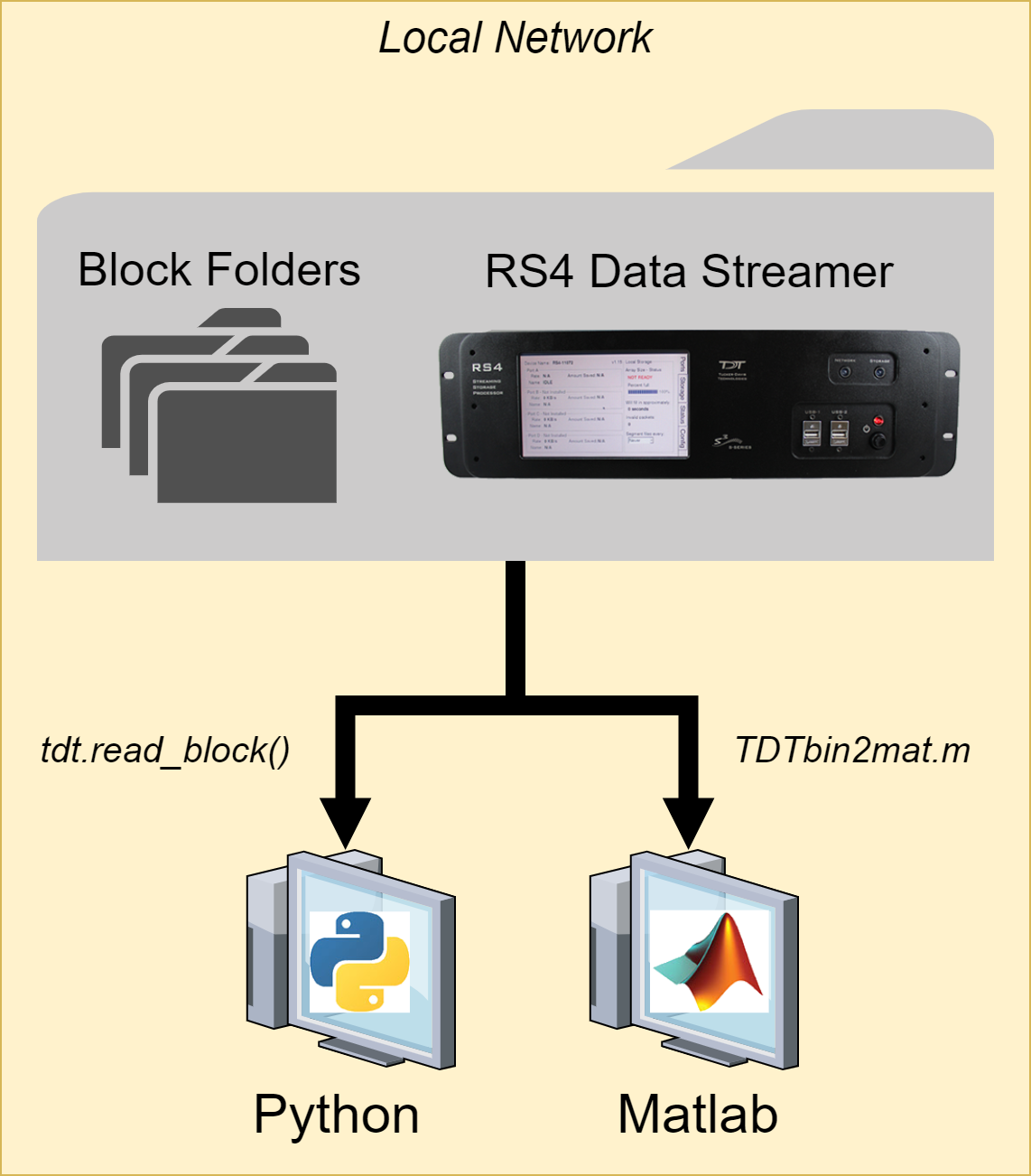Matlab and Python are powerful tools for image processing. Both offer extensive libraries and functions for various applications.
Matlab, with its specialized Image Processing Toolbox, provides an interactive environment for image analysis. It excels in tasks like segmentation, enhancement, and transformation, making it a preferred choice for many researchers. Python, on the other hand, is highly versatile with libraries such as OpenCV, PIL, and scikit-image.
These libraries enable efficient image manipulation, filtering, and computer vision tasks. Python’s open-source nature and extensive community support make it accessible and continually evolving. Both Matlab and Python bring unique strengths, allowing users to choose based on specific project needs and personal preferences.

Credit: www.mathworks.com
Introduction To Image Processing Tools
Image processing is transforming images into useful information. It is widely used in various fields like medical imaging, computer vision, and machine learning. Two powerful tools for image processing are Matlab and Python. They both offer unique capabilities for image analysis and manipulation. Let’s explore them.
Matlab’s Role In Image Analysis
Matlab is a high-level language and environment for numerical computation. It is popular in engineering and scientific communities. Matlab offers robust tools for image processing. The Image Processing Toolbox is one of its key features.
- Image Processing Toolbox provides algorithms for image enhancement, filtering, and transformation.
- It supports functions for image segmentation, morphology, and registration.
- Matlab’s visualization tools help in analyzing and understanding image data.
Matlab also integrates with various hardware, making it suitable for real-time applications. Its built-in functions and ease of use make it ideal for rapid prototyping. Engineers and researchers often prefer Matlab for its comprehensive documentation and community support.
Python’s Emergence In Image Processing
Python has gained immense popularity in recent years. It is known for its simplicity and versatility. Python boasts several libraries dedicated to image processing. Some of the most popular libraries include:
- OpenCV: An open-source library that provides tools for real-time image processing.
- Pillow: An easy-to-use library for opening, manipulating, and saving images.
- scikit-image: A collection of algorithms for image processing.
Python’s extensive libraries make it a go-to choice for developers. Its integration with machine learning libraries like TensorFlow and PyTorch adds to its appeal. Python’s open-source nature ensures continuous growth and updates.
Both Matlab and Python offer powerful tools for image processing. Choosing between them depends on your specific needs and preferences. Each has its strengths, making them valuable in the world of image analysis.

Credit: rkpattnaik780.medium.com
Key Features Of Matlab For Image Processing
Matlab is a powerful tool for image processing. It offers many features for analyzing and manipulating images. Let’s explore the key features of Matlab for image processing in detail.
Built-in Algorithms And Functions
Matlab provides a wide range of built-in algorithms and functions for image processing. These include:
- Image enhancement
- Noise reduction
- Edge detection
- Image segmentation
- Geometric transformations
Using these built-in functions saves time and ensures accuracy. They are optimized for performance and reliability.
Toolboxes For Advanced Analysis
Matlab offers specialized toolboxes for advanced analysis. These toolboxes provide additional functions and applications.
| Toolbox | Description |
|---|---|
| Image Processing Toolbox | Functions for image enhancement, analysis, and visualization. |
| Computer Vision Toolbox | Tools for feature detection, extraction, and matching. |
| Deep Learning Toolbox | Framework for designing and implementing deep learning models. |
These toolboxes make Matlab a versatile tool for image processing. They help in implementing complex algorithms with ease.
Python’s Libraries For Image Processing
Python offers a range of powerful libraries for image processing. These tools are easy to use and can handle complex tasks. They are popular among developers due to their efficiency and versatility. Two of the most prominent libraries are OpenCV and Pillow.
Opencv And Its Capabilities
OpenCV is a widely used library for image processing. It stands for Open Source Computer Vision Library. OpenCV supports a wide range of image processing tasks.
Key features of OpenCV include:
- Image filtering and transformations
- Face detection and recognition
- Object detection
- Image stitching
- Real-time video processing
OpenCV is known for its speed and accuracy. It also supports multiple programming languages. This makes it a versatile choice for many developers.
Pil And Pillow For Basic Tasks
PIL stands for Python Imaging Library. PIL is an older library but still useful for basic tasks. It supports opening, manipulating, and saving many different image file formats.
Pillow is a modern fork of PIL. It maintains the same functionality with additional improvements. Pillow is more up-to-date and supports Python 3.
Basic tasks you can perform with PIL and Pillow include:
- Image resizing
- Image cropping
- Image rotation
- Image filtering
- Adding text to images
Both libraries are easy to use and understand. They are perfect for beginners and handle simple image processing tasks efficiently.
Integrating Matlab With Python
Integrating Matlab with Python brings the best of both worlds. Matlab has powerful image processing tools. Python is flexible and popular. Combining them creates a powerful tool for image processing. This section covers how to integrate Matlab with Python.
Matlab Engine For Python
The Matlab Engine API connects Matlab and Python. This API allows running Matlab code from Python. You can use Matlab functions and return results to Python. This combination helps in complex image processing tasks.
To use the Matlab Engine, you need to install it. Use the command below to install:
pip install matlab.engine
Next, import the Matlab Engine in your Python script:
import matlab.engine
Start the Matlab engine with:
eng = matlab.engine.start_matlab()
Now, you can call Matlab functions from Python. For example, use:
result = eng.sum([1, 2, 3])
This command runs the sum function in Matlab. The result is returned to Python.
Data Exchange Between Platforms
Exchanging data between Matlab and Python is smooth. The Matlab Engine API makes this easy. You can send data from Python to Matlab and get results back.
For example, send a Python list to Matlab:
data = [1, 2, 3]
matlab_data = matlab.double(data)
result = eng.sum(matlab_data)
This code converts a Python list to Matlab format. The sum function then processes this data in Matlab.
You can also send matrices between platforms. Convert a Python NumPy array to Matlab format:
import numpy as np
np_array = np.array([[1, 2], [3, 4]])
matlab_matrix = matlab.double(np_array.tolist())
This conversion allows complex data structures to move between Matlab and Python.
Here is a table summarizing data exchange options:
| Data Type | Python to Matlab | Matlab to Python |
|---|---|---|
| Scalar | Use matlab.double() |
Use float() |
| List | Use matlab.double() |
Use list() |
| Matrix | Use matlab.double() |
Use np.array() |
Using these methods, you can leverage the strengths of both Matlab and Python.
Streamlining Workflow With Hybrid Approaches
Combining Matlab and Python can make image processing easier. Each language has unique strengths. Using both can optimize your workflow.
Leveraging Strengths Of Both Languages
Matlab is great for matrix operations and visualization. It offers powerful built-in functions for image processing. Python shines with its flexibility and libraries like OpenCV and NumPy. This combination allows for more efficient and effective workflows.
| Matlab | Python |
|---|---|
| Excellent matrix manipulation | Flexible and versatile |
| Advanced visualization tools | Rich library ecosystem |
| Optimized for engineering tasks | Great for scripting and automation |
Case Studies Of Combined Workflows
Case Study 1: Medical Imaging – A hospital uses Matlab for initial image pre-processing. The processed data then feeds into a Python script. This script uses machine learning to detect anomalies.
Case Study 2: Satellite Image Analysis – Researchers use Matlab for data extraction. They then use Python libraries to analyze the extracted data. This hybrid approach saves time and improves accuracy.
- Pre-process images with Matlab.
- Feed processed data into Python.
- Analyze and visualize results using Python libraries.
Using Matlab and Python together can streamline workflows. This hybrid approach leverages the strengths of both languages. It improves efficiency and accuracy in image processing tasks.
Performance Benchmarks: Matlab Vs. Python
When choosing between Matlab and Python for image processing, performance is key. Matlab has been a standard for years, while Python has gained popularity due to its open-source nature. Understanding their performance differences helps in making an informed decision.
Speed And Efficiency Comparisons
Speed and efficiency are critical factors in image processing. Matlab is known for its optimized performance in numerical computations. Python, with libraries like NumPy and SciPy, also offers competitive speed.
Matlab often excels in operations involving matrix manipulations and linear algebra. This is due to its built-in functions specifically designed for these tasks. In contrast, Python relies heavily on third-party libraries to achieve similar performance levels.
| Task | Matlab | Python |
|---|---|---|
| Matrix Multiplication | Faster | Slower |
| Image Filtering | Efficient | Comparable |
| FFT Computation | Optimized | Requires Libraries |
Handling Large Datasets
Handling large datasets is another crucial aspect. Matlab has a memory-efficient architecture, making it suitable for large-scale data analysis. Python, with libraries like Pandas and Dask, also manages large datasets efficiently.
In Matlab, memory management is straightforward due to its specialized functions. Python provides flexibility with various data handling libraries, but it requires more coding to optimize memory usage.
- Matlab: Memory-efficient, built-in large data handling functions.
- Python: Flexible, but needs external libraries for optimization.
Both tools have their strengths and weaknesses. Matlab offers built-in efficiency, while Python provides flexibility with external libraries. Choose based on your specific needs in image processing tasks.
User Experience And Community Support
When working with image processing tools, the user experience and community support play a crucial role. Both MATLAB and Python offer robust tools for image processing. Let’s dive into how each platform fares in terms of user experience and community support.
Ease Of Use For Beginners And Professionals
MATLAB provides a user-friendly interface. It is designed for engineers and scientists. Beginners find it easy to navigate. Professionals appreciate its advanced features. MATLAB’s Graphical User Interface (GUI) simplifies complex tasks. You can perform image processing with just a few clicks.
Python offers a more code-centric approach. It requires knowledge of programming. Beginners might find it challenging initially. But, Python’s extensive libraries like OpenCV and Pillow make it powerful. Professionals love Python for its flexibility and open-source nature.
Forums, Tutorials, And Resources
Both MATLAB and Python have extensive community support. Here’s a comparison:
| Platform | Resources |
|---|---|
| MATLAB |
|
| Python |
|
MATLAB offers structured resources. Python’s resources are more diverse and community-driven. Both platforms excel in user support. Choose based on your comfort and preference.
Future Of Image Processing
The future of image processing is bright. With technologies like Matlab and Python, the field is evolving rapidly. These tools offer advanced capabilities for image analysis and enhancement. The combination of these tools with emerging technologies promises a transformative impact on various industries.
Emerging Trends In Algorithm Development
New algorithms are changing the landscape of image processing. These algorithms are more efficient and accurate. They help in processing images faster and with better quality.
- Real-time Processing: Algorithms now allow for real-time image analysis. This is crucial for applications like video surveillance and autonomous driving.
- 3D Imaging: Creating 3D images from 2D data is now possible. This has significant applications in medicine and engineering.
- Edge Detection: Improved edge detection algorithms help in identifying objects within images. This is beneficial for facial recognition and other security applications.
The Role Of Ai And Machine Learning
Artificial Intelligence (AI) and Machine Learning (ML) are revolutionizing image processing. They bring new capabilities and improve existing processes.
- Pattern Recognition: AI can recognize patterns in images. This helps in identifying objects and features accurately.
- Image Enhancement: ML algorithms can enhance image quality. They remove noise and improve clarity.
- Automation: AI automates many image processing tasks. This reduces the need for manual intervention and speeds up the process.
Combining Matlab with Python and AI/ML offers powerful solutions. This combination is set to shape the future of image processing significantly.

Credit: www.tdt.com
Frequently Asked Questions
What Is Better For Image Processing, Matlab Or Python?
Python is better for image processing due to its extensive libraries like OpenCV and PIL. It’s also free and highly versatile.
Can I Use Python For Image Processing?
Yes, you can use Python for image processing. Libraries like OpenCV, PIL, and scikit-image make it easy and efficient.
Is Opencv Better Than Matlab?
OpenCV is generally faster and open-source, making it ideal for real-time applications. MATLAB offers more comprehensive toolboxes and ease of use. The choice depends on specific project requirements and user preference.
Can You Do Image Processing In Matlab?
Yes, you can do image processing in MATLAB. It offers robust tools and functions for various image processing tasks.
Conclusion
Matlab and Python offer powerful tools for image processing. Both have unique strengths and applications. By integrating these tools, users can achieve remarkable results. Experiment with both to find the best fit for your needs. Enhancing your skills in these platforms can significantly boost your image processing capabilities.



